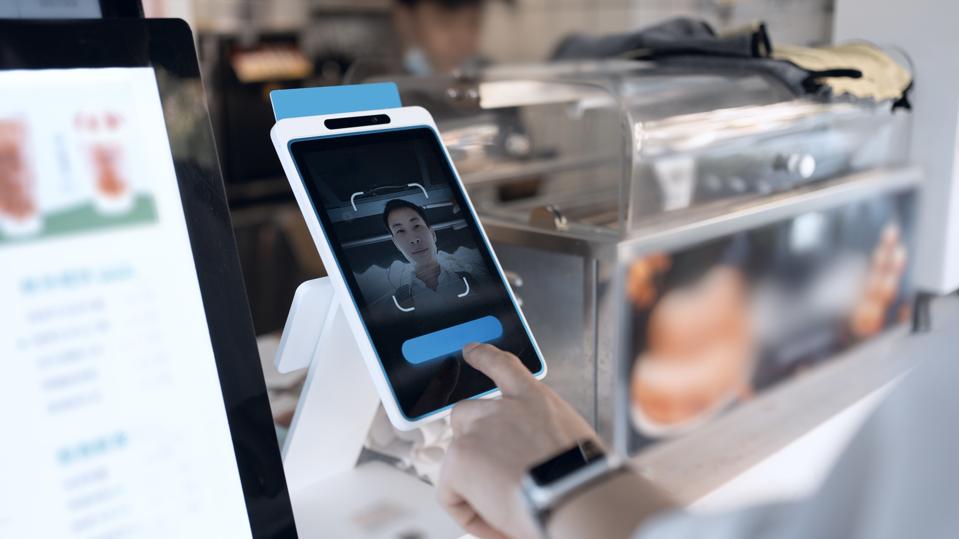JPMorgan Chase is planning a broad roll out of biometric payments with US retailers by early next year, enabling shoppers to make purchases by scanning their palms or faces. The bank’s executive director of biometrics and identity solutions, Prashant Sharma, said “We would like every merchant to adopt this, but at the end of the day, it is going to be a merchant’s choice”. He is right, of course, but it is interesting reflect on why merchants will choose to go down this route.
Convenience In Stores
When it comes to retail payments, the fact is that convenience always comes first. So while merchants and financial institutions have to have security as table stakes, consumers have to have convenience. Biometrics, when implemented correctly of course, can deliver both. At retail point-of-sale, such systems are a win-win.
This is why I share that bullish take on the technology even in the U.S., which has in some cases been slow to adopt new payments technology. It adopted chip and PIN and then later contactless after all its peer countries and could do the same with biometric payment technology. Just one in four Americans are comfortable using a biometric hand scanner for payment. Meanwhile, 50% of Canadian and British consumers are open to adopting biometric payments and log-ins.
In fact in the US, while consumer confidence in facial recognition biometrics for security purposes remains high, support for the use of the technology in retail settings has fallen significantly over the last couple of years. I think, as other observers do, that these consumer attitudes are a function of familiarity, which is why they will change quickly. The more exposed consumers are to biometrics at POS, the more comfortable they will be with this technology.
American are already beginning to experience a variety of new biometric payment options and I am sure that much wider adoption will accelerate. One place that Americans will become more familiar with the technology is sports and events where the technology is already being used to great effect. Amazon, for example, launched the Just Walk Out store in the Seahawks’ Lumen Field NFL stadium some time ago. The AI-based checkout allows fans to enter a concession stand, grab what they want, and walk directly back to their seats without going through a checkout process. Fans clearly like it, because the stadium saw double sales when compared to the previous store in the same location.
(Amazon is moving away from Just Walk Out for its retail stores and is focusing on its Amazon One palm recognition solution, having just launched an app which lets customers sign up for the service using their phone instead of visiting astore. Customers can create their profile by logging into their Amazon account, talking a photo of their palms and adding a payment method. There are now 500 Whole Foods Market stores in the US using Amazon One, along with several Amazon stores and more than 150 third-party locations including stadiums, airports and convenience stores.)
Many sports franchises and event locations are moving to cashless checkout experiences using biometric technologies. Fans of the Colorado Rockies, the Boston Red Sox, the Kansas City Royals, the Houston Astros and many others are moving to similar palm, face and other solution. Such cashierless biometric checkouts process transactions faster than traditional checkouts, which is particularly important in sports and event setting where there are big peaks in customer demand.
I think many merchants will indeed choose to go this way because there is a particularly appealing aspect to this type of fast and convenient authentication at the check out, in that it enables a retailer to combine both an authenticated payment transaction and an authenticated loyalty transaction in one “identity ceremony” so that the customer can complete both transactions without needing to present cards, a phone or anything else. Now, the idea of linking a biometric identifier to a payment mechanism to speed up checkout in the grocery store is hardly new or revolutionary (after all, Piggly Wiggly did this twenty years ago) but as the technology becomes more accurate and therefore more convenient, it will inevitably scale to meet both consumer and merchant demands.
Worth The Risk
Now there is a risk, of course, and that is that consumers will shy away from biometrics because they are concerned about surveillance and the potential for misuse. These are entirely reasonable fears, by the way. Prashant notes that while their may be some sensitivity around biometrics, the bank “don’t see this as a big risk” and I think he right, provided that the industry is up front with consumers about how biometrics work. It seems to me that the way to deal with consumer concerns is to be entirely transparent about how the relevant templates and other data is collected, stored and used. This openness is crucial to scale use of the technology.
Given that Goode Intelligence forecast global biometric payment volume at almost six trillion dollars (with three billion users) by 2026, I think we can say that JPMC’s decision to get behind the technology for payments is going with the grain. Speaking as a shopper, who has used the same supermarket, with the same loyalty card and the same payment card and pretty much the same coupons for decades, I can’t wait for this technology to come to my local store.

